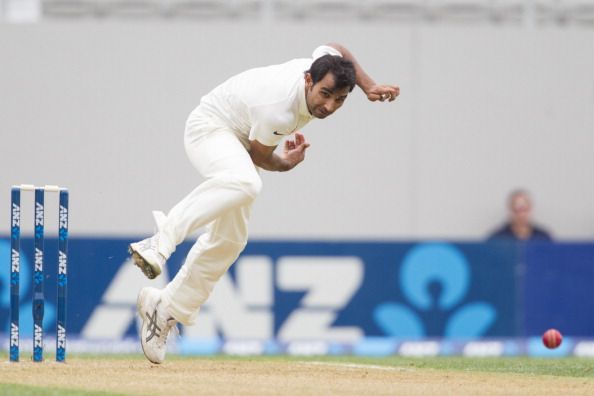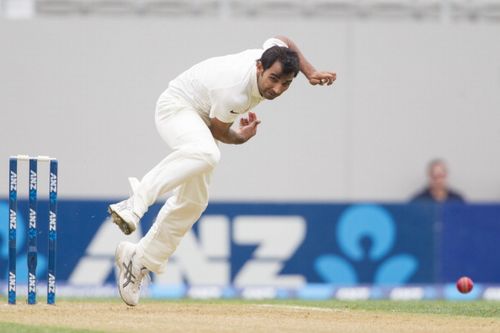
Are flat tracks at home a concern?
The recently concluded Test series between India and New Zealand was in line with the emerging trend in Test cricket these days. Although India’s defeat was a narrow one and one that could have been avoided, they still failed to buck the trend of poor away results for international sides. For some time now, India has been a side that is all-conquering at home, but insipid on road.
The simple truth is India isn’t alone in that regard. The Ashes was a testament to the fact that it isn’t just restricted to one cricketing nation. England trounced Australia at home only to be whitewashed months later in Australia. Barring an odd result, most away sides have struggled to establish themselves. Whilst there are different reasons for different teams – for India at least – much of the blame should be attached to the flat tracks that are produced at home.
Batsman-friendly pitches at home have meant that runs are easy to come by in the domestic circuit. The lack of support for the bowlers has meant that the technique of the batsman hasn’t quite been tested, as well. This coupled with the fact that India is now producing far more aggressive batmen than they have done ever before add up to a recipe for disaster in testing conditions abroad. India emerged as one of the best sides in the world last year, mainly due to their batting might. Whilst it is easy to do in conditions that don’t favor the bowlers, it becomes tricky in the seaming decks of South Africa, New Zealand and Australia. Only sound technique pays dividends in those conditions.

Fast bowlers can get support too (bowler in pic – Mohammed Shami)
Since runs are easy to come by in India, the batsman don’t realize the need to be cautious. The batsmen seem to have forgotten the golden rule of batting, ‘If the opposition is giving you easy singles, take it’. Unfortunately for India, batsmen, of late, are so accustomed to hitting boundaries that they forget to take the ones and the twos that are on offer. In doing so, they heap more pressure on themselves, which eventually leads them to playing a rash shot that costs them their wicket. A look at the Indian batsmen who have flourished abroad will throw up the likes of Virat Kohli, Ajinkya Rahane and Cheteshwar Pujara, players known their solid stroke-play and resolute defense. The rest have all perished because they lack the patience necessary to grind down the opposition.
The step up from the Ranji trophy to the international arena is becoming a bridge that is widening with every passing day. The selectors seem to recognize this, and that is precisely why so few Ranji batsmen – who have scored bucket loads of runs – are called up to the national side. Even Pujara, for all of his records in the domestic level, had to wait for a very long time. This will remain the case so long as flat tracks continue to be the norm at home. Aside from the rank turners that are produced in Chennai and Kolkata, most pitches across India favor the batsman.
The bowlers have had to toil long and hard before they get anything going. Fast bowlers who started their careers bowling in the mid 140s are forced to bowl in the low to mid 130s as their workload is a lot more than it should be. It is not just the fast bowlers, but the spinners as well, who are affected by this scenario. India has a history of producing great spin bowlers: from the likes of Bishan Singh Bedi to the more recent Anil Kumble and Harbhajan Singh. But over the past few years – aside from Ravichandran Ashwin and Pragyan Ojha – nobody has even had a chance to play Test cricket, not just away from home, but even at home.
Even Ashwin is in the side because he has a Test century to his credit. Such is the sorry state of affairs right now that even bowlers are only picked based on their batting exploits. Gone are the days when visiting teams found playing the Indian spinners in their backyard as an uphill task. They know that India doesn’t really have a bowling attack that is capable of taking 20 wickets even at home, unless the team is as scopeless as West Indies or Australia.
BCCI needs to take a long, hard look at the pitches in the Ranji trophy and realize that something has to change. Unless they understand that the bowlers need to be supported, this situation will surely prevail. If the BCCI continues to turn a blind eye towards the reality, then don’t be surprised if India fails to win a single Test series away from home in the foreseeable future. For all the runs you score, if you don’t take 20 wickets in a match, you aren’t going to win it. And the sooner the BCCI realizes this, the better it is for Indian cricket.